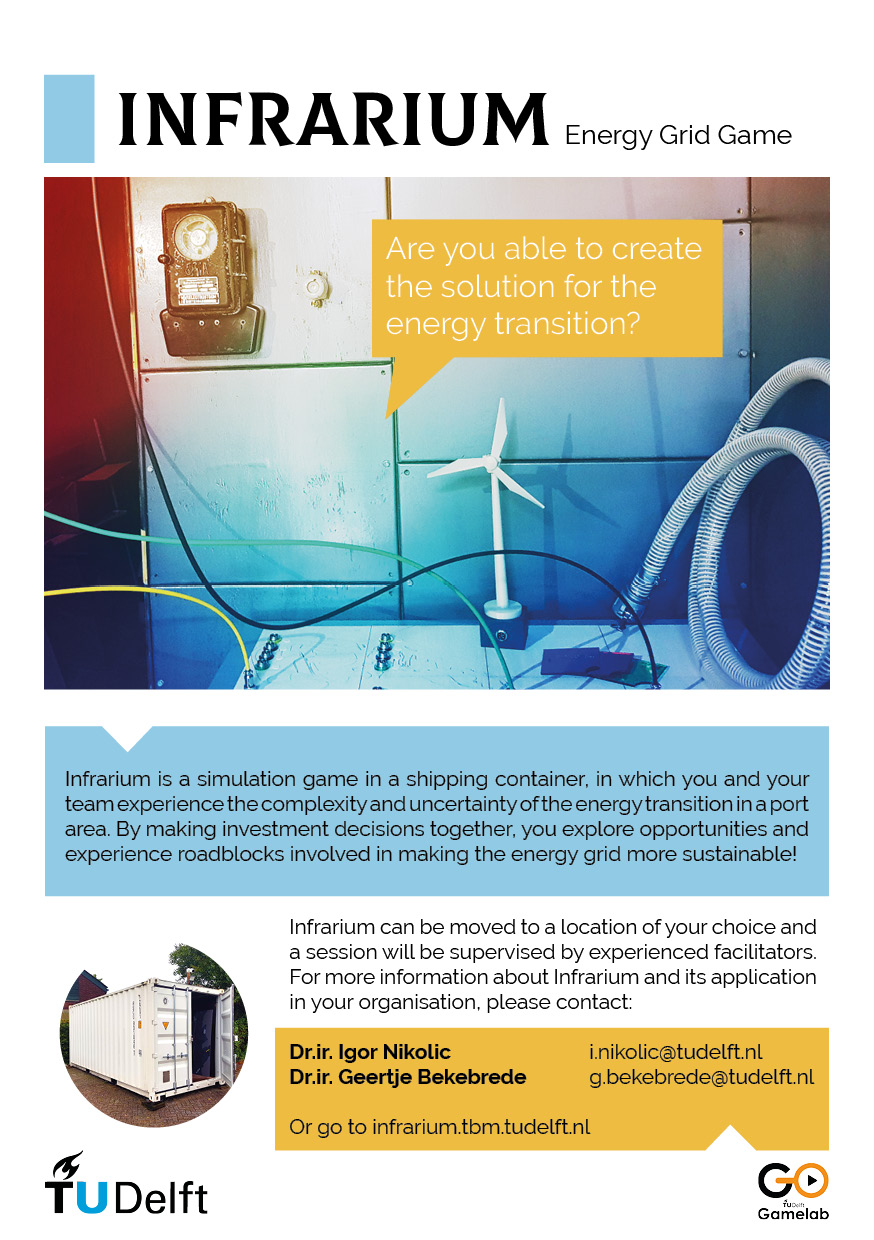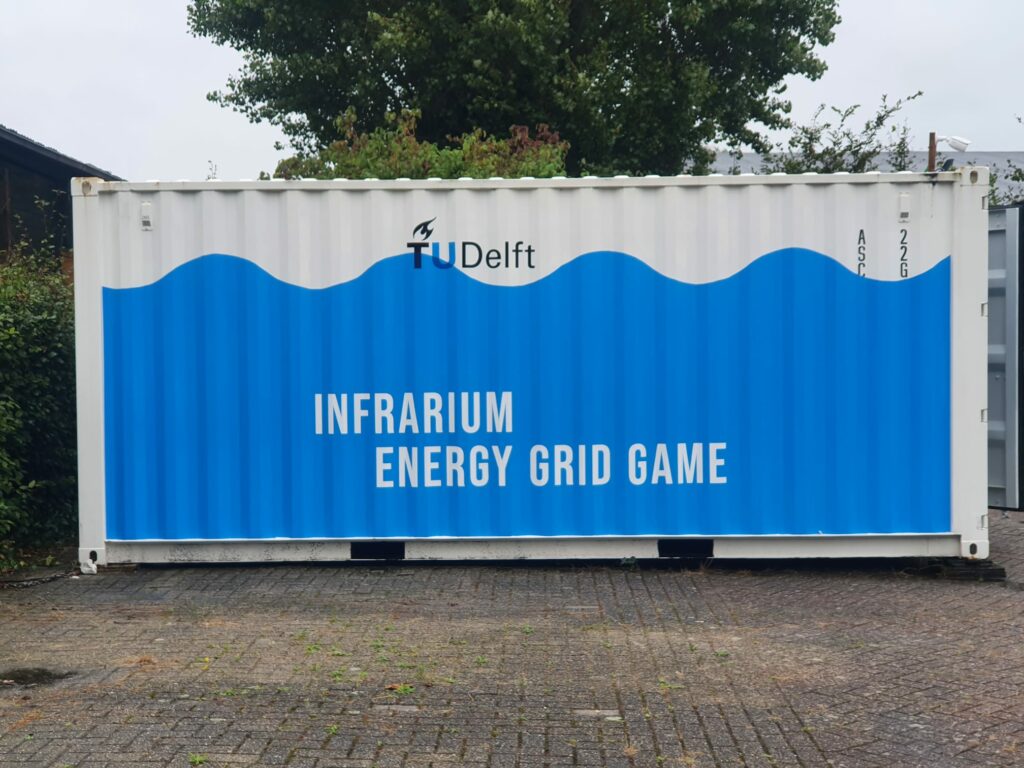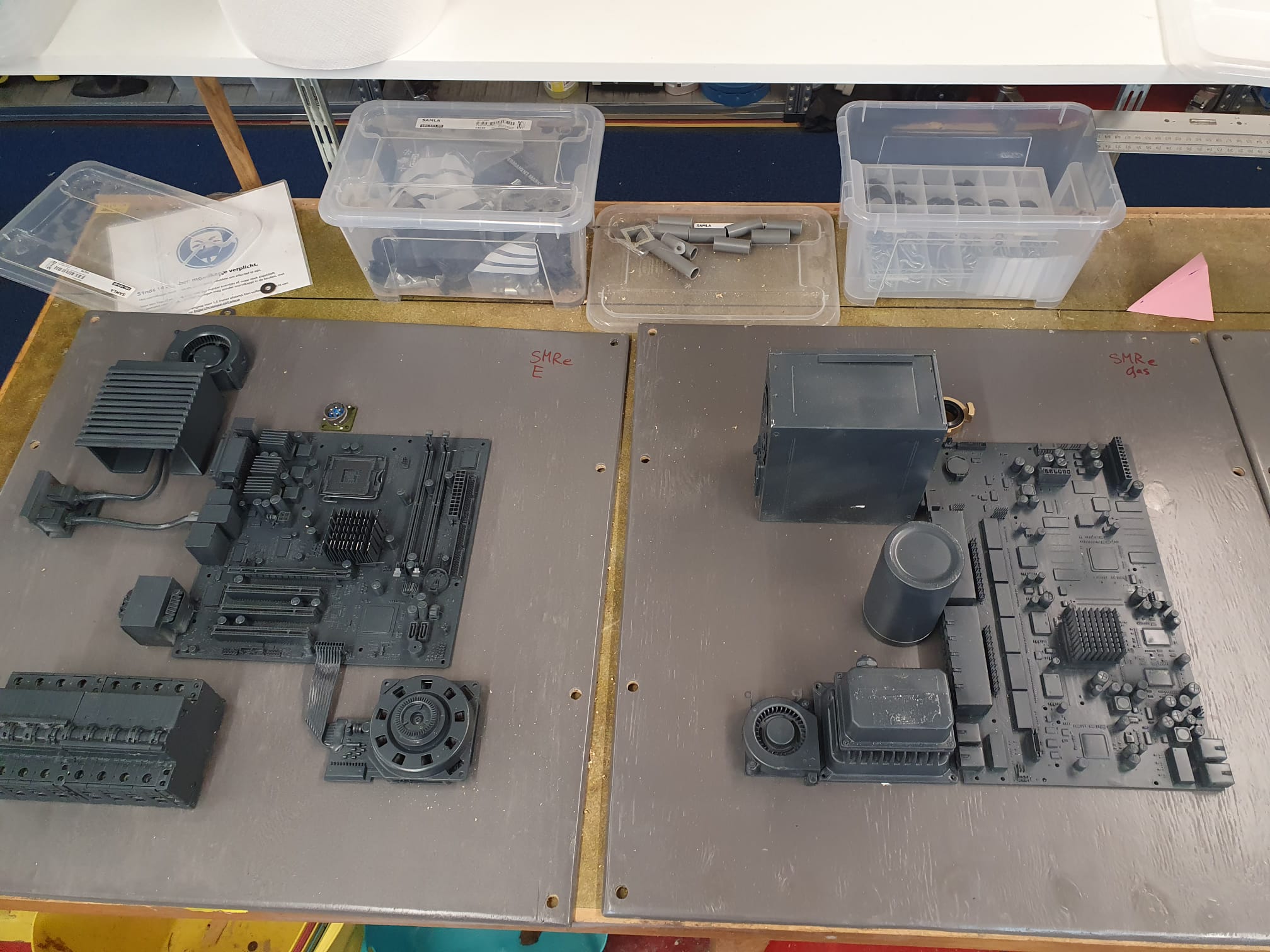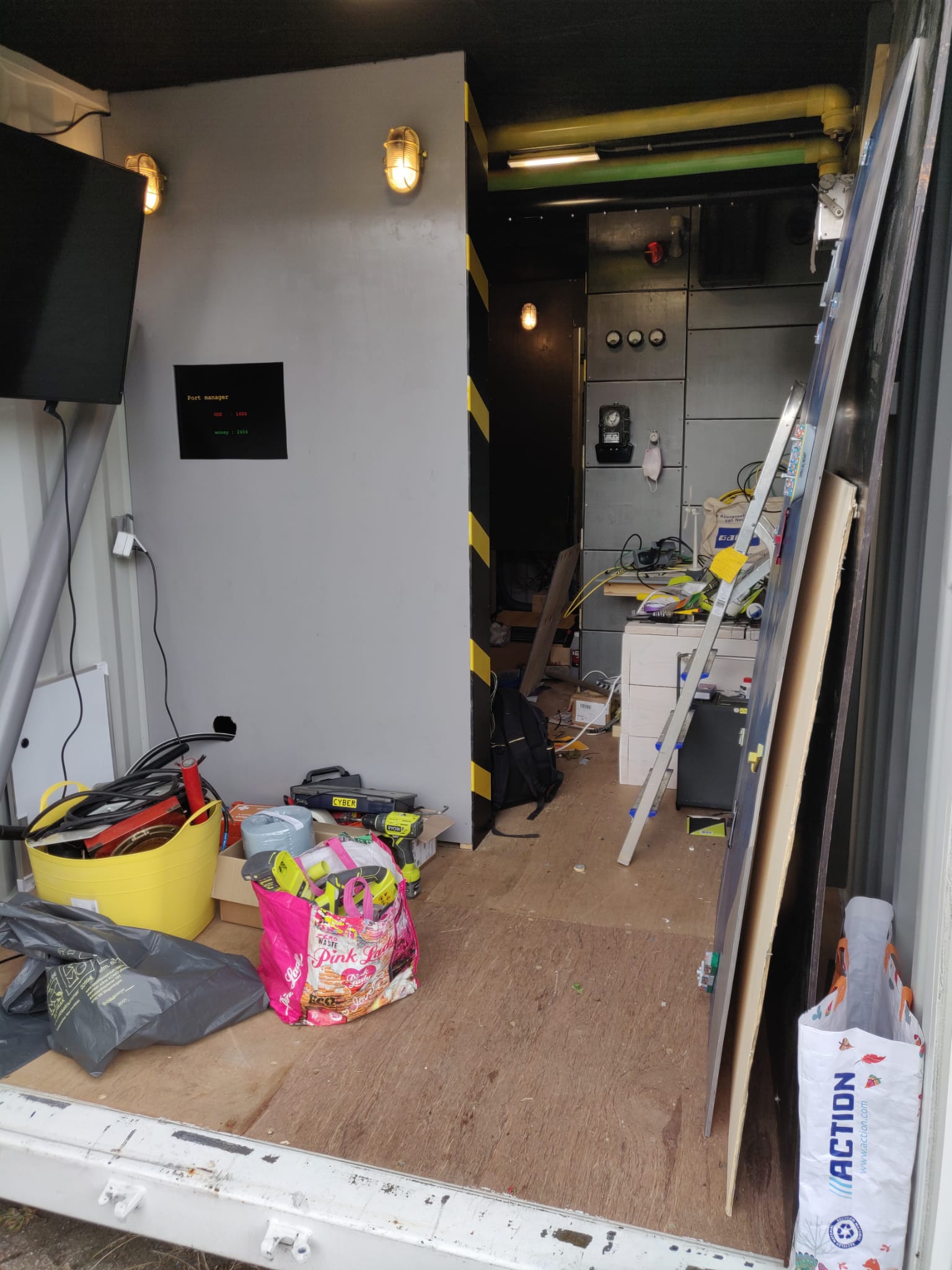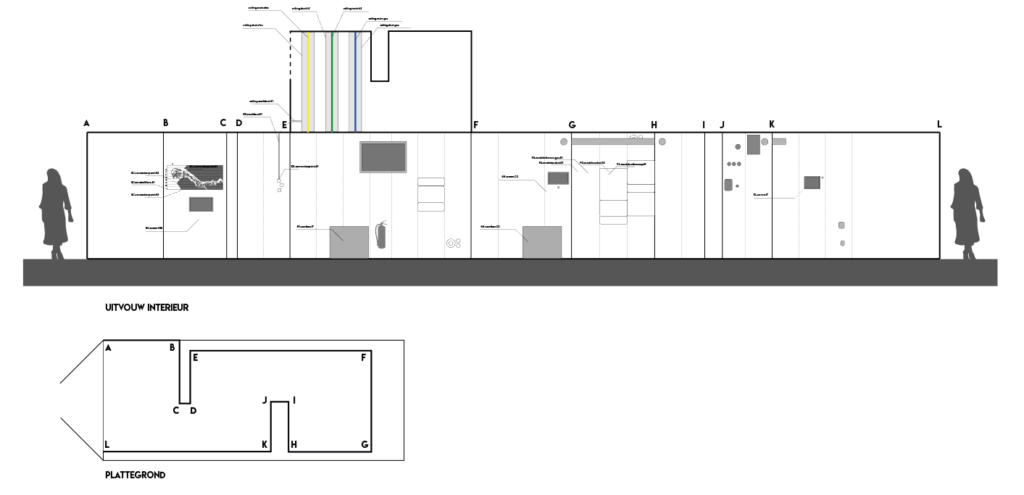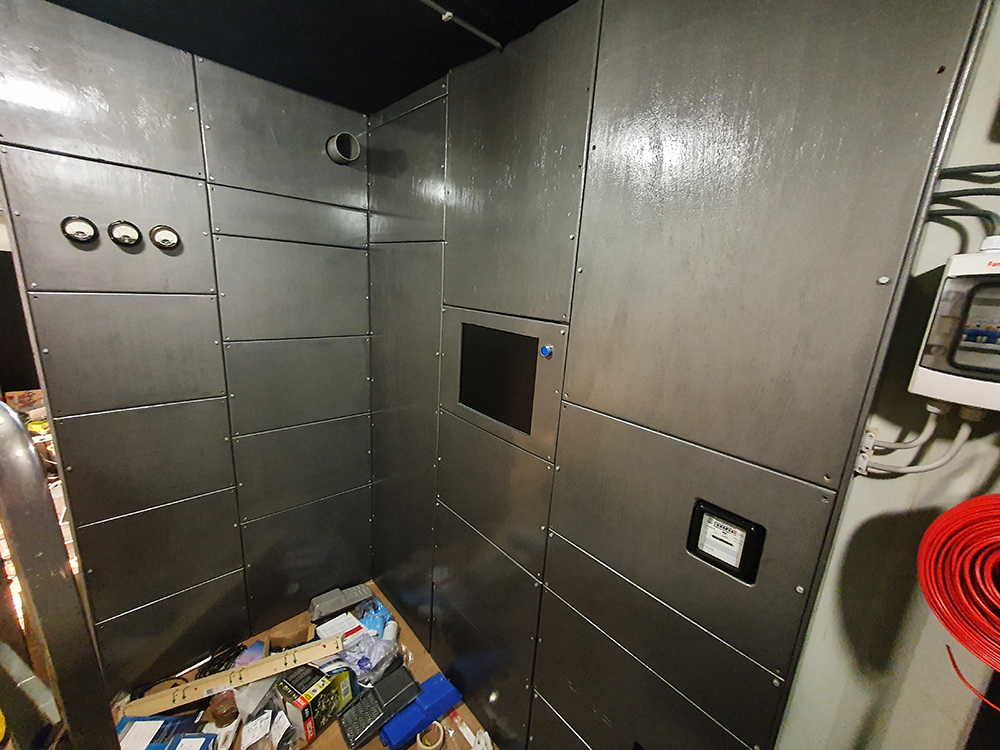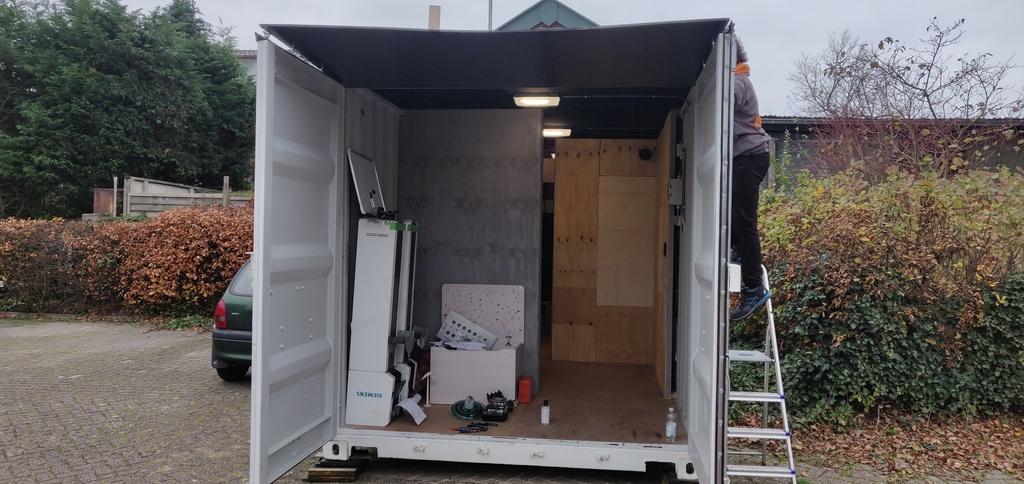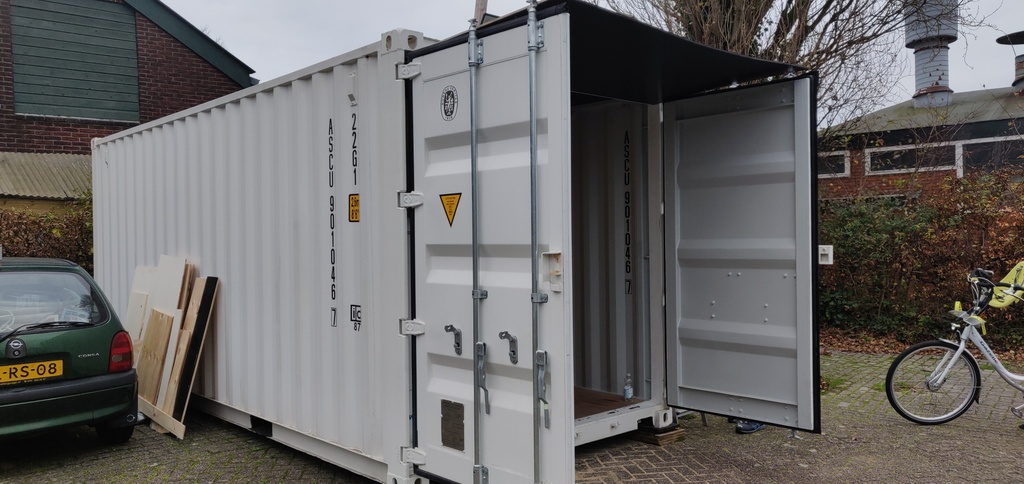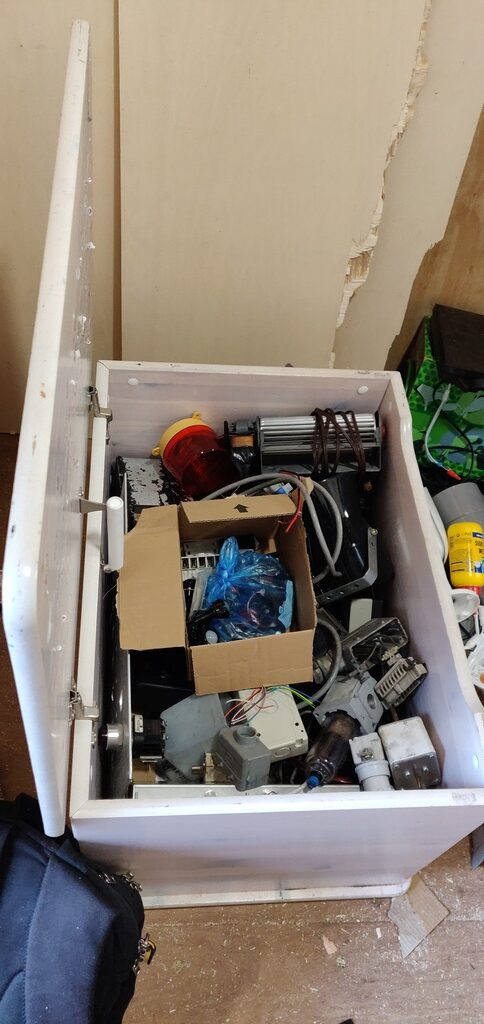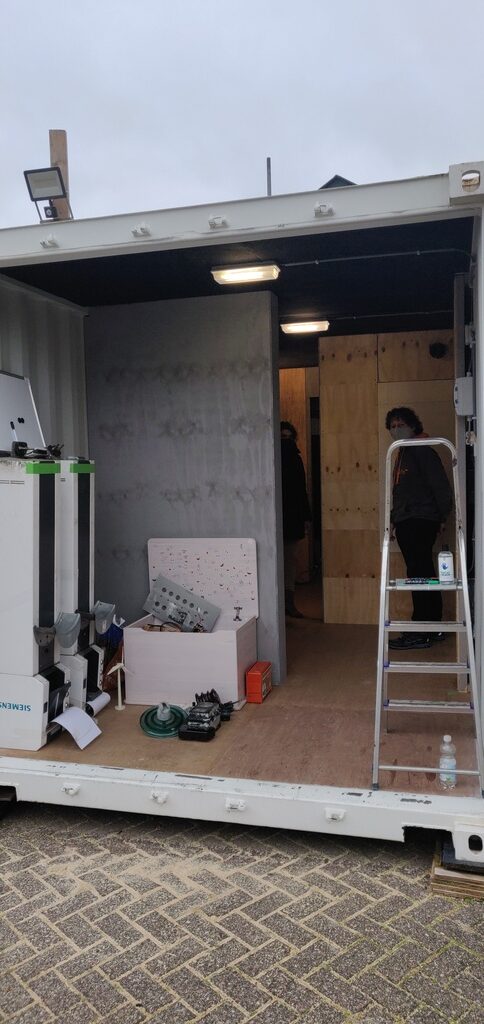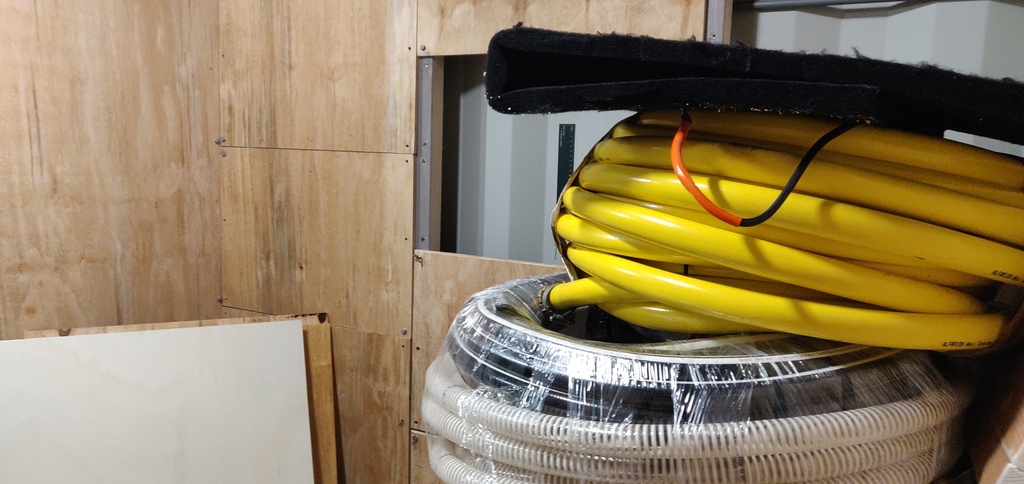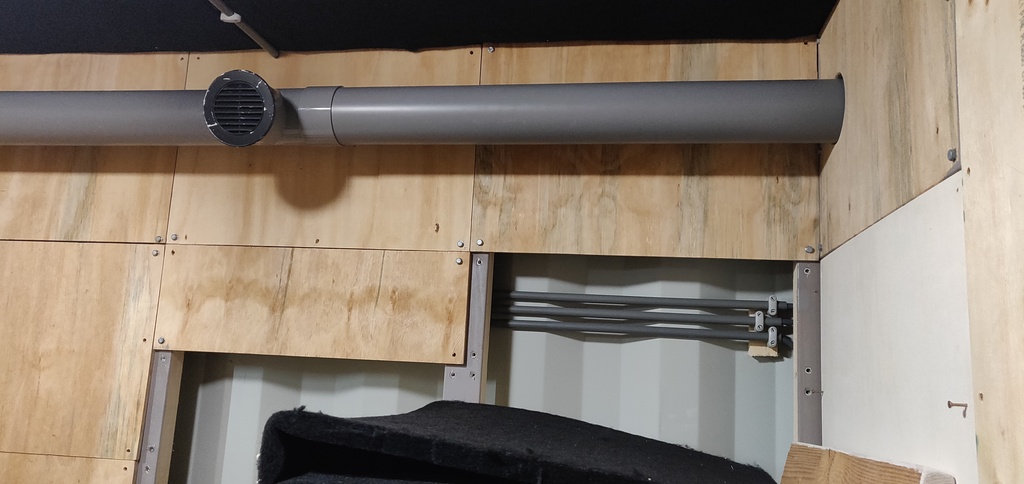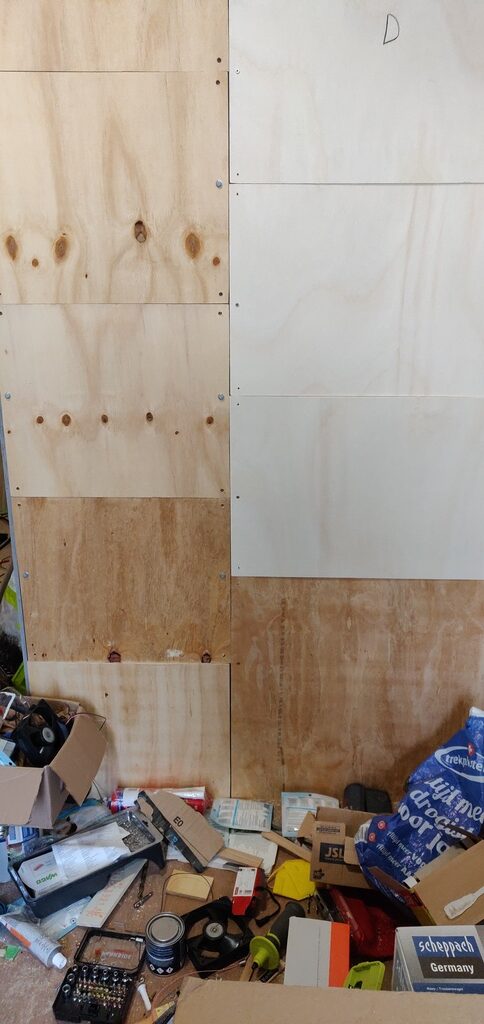Tu Delft Stories on Infrarium

Forty-five minutes of stress in a sea container that has been transformed into an infrarium filled with physical and mental challenges. How do you go about laying energy cables without disrupting industry or energy suppliers? How can you work with others in a small space filled with smoke, flashing lights and incessant noise? What effect do stress and emotions have on decision-making? The Energy Grid Game simulation reveals the challenging decisions that the energy sector will face during the current energy transition. This case focuses on the Port of Rotterdam. The game was designed by Igor Nikolic, associate professor of participatory multi-modelling, and Geertje Bekebrede, associate professor of serious game design. The goal is to allow participants to experience, both physically and emotionally, the urgency, cohesion, mutual dependence and complexity of the energy transition.
A piece in the TU Delft stories has been published about Infrarium!
In dutch:
In English
